Intro
Democratic governments are praised and advocated for. But benign dictatorships stand as a striking contrast. This has been subject to much debate in the world.
But what exactly is a benign dictatorship? What are its advantages and disadvantages? Is it sustainable in the long run?
This blog post will explore these questions.
We will delve into the concept of benign dictatorship.
Understanding the Concept of Benign Dictatorship

Let’s dive deeper into the world of benign dictatorship. It’s quite a unique form of governance. It has the power dynamics associated with autocracy. But, it is exercised with the people’s welfare at its core. At times, it is known as enlightened dictatorship or benevolent autocracy. This is the opposite of the stereotypical cruel dictator.
Picture a leader with complete control over the nation’s affairs. They use that authority not for personal enrichment or power. Instead, they use it to elevate the entire society. These leaders bypass the lengthy democratic processes to enact swift and decisive measures. A benign dictatorship still possesses the iron-fisted control typical of dictatorships. But, it serves its people rather than suppresses them. This makes it an intriguing subject of study.
Famous Examples of Benign Dictatorships

Benign dictatorships have appeared throughout history. These real-life cases help us understand this phenomenon better. Let’s journey back and explore some notable examples. Our first stop is Singapore, where we meet Lee Kuan Yew, the nation’s inaugural Prime Minister. Often described as an authoritarian, Lee wielded extensive power. Yet, he channeled this authority into transforming Singapore from a struggling post-colonial state. He made it into a prosperous global hub for commerce and technology.
Next, we venture to Turkey, where Mustafa Kemal Atatürk reigned. Despite his autocratic rule, Atatürk emerged as a progressive leader. He ushered in sweeping social, legal, and political reforms. His leadership modernized Turkey. It also sowed the seeds of the secular and democratic nation we see today.
These leaders are prime examples of benign dictatorships. They held absolute power but chose to use it for the betterment of their nation and its citizens. Such leaders are few and far between. Their legacies provide a fascinating glimpse into the dynamics of benign dictatorships.
Advantages of a Benign Dictatorship

The allure of benign dictatorships comes from some key benefits they present. For starters, such systems have a streamlined decision-making process. This makes rapid responses to crises and efficient policy implementation possible. A single authority makes decisions. In more traditional democratic setups, many parties jostle for power. This often leads to deadlock.
Next, consider the scope of long-term planning. In a benign dictatorship, the leader is not encumbered by election cycles or changing public opinion. This allows them to look far ahead and install visionary policies. These policies may need years or even decades to bear fruit. There’s no need to worry about securing re-election.
One area where benign dictatorships shine is infrastructural development. A single, motivated leader with the welfare of their people in mind can allocate resources and drive significant progress in critical sectors such as healthcare, education, and public utilities. With a clear vision and unchallenged authority, they can quickly transform their nation’s physical and social landscape.
In a nutshell, a benign dictatorship offers the potential for fast, effective governance. It focuses on long-term societal advancement. But it’s crucial to remember that these benefits depend on the dictator’s commitment to public service. The benefits also rely on their willingness to rule with fairness and benevolence.
Drawbacks of a Benign Dictatorship

The alluring charm of a benign dictatorship lies in its potential for efficient governance. But, we must also heed the significant pitfalls it can present. Picture a system where power is concentrated in one individual or body. It is unimpeded by the safeguards and checks seen in democratic societies. This concentration can be a slippery slope. It leads to misuse and abuse of authority.
When the public doesn’t make decisions, policies may not reflect people’s needs or desires. Here lies a critical downside – a disconnect between the rulers and the ruled. Policies may be executed swiftly. Are they serving the public interest or just the leader’s personal agenda?
Freedom of speech and civil liberties are pillars of democratic societies. But, in a benign dictatorship, these may be threatened. Criticism and opposition can be perceived as threats to the state. This can lead to silencing dissenting voices. It can also foster a climate of fear and self-censorship.
Think about the development of a robust civil society. It thrives on open debate, civic participation, and the empowerment of individuals. In a benign dictatorship, the growth of such a society could be stifled. People may be deterred from expressing opinions contrary to the state’s narrative.
A benign dictatorship can deliver swift decision-making and rapid progress. But, these benefits are balanced against significant drawbacks. The weighing of these aspects necessitates a keen eye and open dialogue. Let’s continue our journey through the concept of benign dictatorship. Next, we’ll delve into the intricate matter of human rights within such regimes.
Benign Dictatorship and Human Rights

A Paradox of Progress and Constraint
Navigating the labyrinth of human rights within benign dictatorships can be a paradoxical journey. Yes, these regimes often champion social and economic progress. This results in uplifted living conditions, improved infrastructure, and more. But in the shadows of these successes often lurk constraints on essential civil and political liberties. Let’s examine this more closely.
The freedom to express one’s opinions, the right to peaceful assembly, and the guarantee of a fair trial are fundamental human rights. These rights form the bedrock of democratic societies. Citizens can voice their disagreements and gather for common causes. They can also be assured of justice. But within the boundaries of a benign dictatorship, these freedoms can be curtailed. They exist more as abstract concepts than practiced rights.
Consider freedom of speech. A harmless critique of the regime could be seen as a threat to the established order. This could lead to harsh consequences. Organizing a peaceful protest might be viewed as an act of defiance. It might invite punitive measures. This atmosphere often leads to self-imposed silence. The phenomenon is known as self-censorship. Fear replaces freedom, and silence drowns dissent.
Balancing Progress and Rights
Then there’s the matter of fair trials. In a benign dictatorship, the scales of justice could be tipped in favor of the state. The dictator might manipulate legal proceedings. This could pervert justice. Unchecked power could create an environment. Individuals may be reluctant to challenge the state, even in the face of injustice.
Thus, benign dictatorships might yield significant social and economic advancements. They often do so at the cost of civil and political liberties. The balance between societal progress and human rights protection is a contentious issue in these regimes. It requires thoughtful discourse and comprehensive analysis. As we journey further into the nuances of benign dictatorships, we’ll delve next into their intersection with democratic principles.
Benign Dictatorship and Democracy

The crossroads of benign dictatorship and democracy paints an intricate picture. On the one hand, we have benign dictatorships. They deliver results swiftly and efficiently. But this comes at the expense of democratic tenets. This includes transparency, accountability, and citizen participation. Democracy thrives on these principles. But, it often sacrifices efficiency and rapid progress.
Some people see benign dictatorships as a bridge to democracy. They can provide the stability and development needed. This creates a healthy environment where democracy can flourish. Yet, this outcome relies on the benign dictator’s propensity to surrender power. This willingness to relinquish authority is critical. In the passing of the baton from the benign dictator to a democratically elected body, true democratic transformation begins.
Yet, let’s not forget that democracy is more than a process of selecting leaders. It is a system where citizens have a direct say in the decisions that impact their lives. In benign dictatorships, active citizen participation is absent or, at the very least, reduced. Citizens in a benign dictatorship might enjoy the fruits of efficient governance. But are they part of the tree that bears these fruits? This question lingers at the intersection of benign dictatorships and democracy.
As we move forward, we must grapple with these paradoxes and contradictions. We must also consider the unique historical, cultural, and socio-economic contexts within which each system operates. The dynamics of governance are never one-size-fits-all. Neither benign dictatorships nor democracies are immune from challenges. Instead, it’s in understanding these complexities that we can navigate the evolving landscapes of governance and power.
Evaluating the Long-term Sustainability of Benign Dictatorships

Benign dictatorships can last a long time. The ruler’s personality is a crucial factor. Imagine a ruler who embodies true benevolence. They use their authority to foster societal development. In such a scenario, benign dictatorship could serve as a stepping stone. It could pave the path for the evolution of more participatory and inclusive forms of governance. But shift the lens slightly, and we see a different picture. If the dictator’s motivations are self-interested and self-aggrandizing, we could be on the brink of classic tyranny.
Another factor is the issue of succession. It’s entwined with the sustainability of benign dictatorships. The regime’s stability is linked to the leader’s lifespan. Thus, the transfer of power becomes a critical juncture. Who will step into the dictator’s shoes once they are gone? Will the successor continue to rule with the same benevolent principles? Or will they exploit the amassed power for personal gain? This uncertainty casts a long shadow over the long-term viability of benign dictatorships.
As we unravel the complexities of benign dictatorships, we encounter a mix of factors at play. Some paint a picture of potential transformation towards democratic governance. Others foreshadow the descent into autocracy. A host of variables decide the fate of these unique regimes. The dictator’s character, motivations, succession plan, and more all determine the outcome.
Navigating these uncertainties is a challenging task with no clear-cut answers. Each benign dictatorship, just like each democratic government, molds itself according to its unique historical, cultural, and socio-economic context. The actual test of sustainability lies in the balance of power. It also lies in the preservation of societal welfare and the evolution of governance structures over time. The story of benign dictatorships is a dynamic tapestry. It is intriguing, paradoxical, and ever-evolving.



